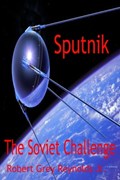Sputnik blasted off in late 1957 and the Space Age and Space Race between the Cold War adversaries heated up. U.S. President Dwight David Eisenhower was under pressure to do more in the science and military fields to catch up to the Soviet breakthrough. Sputnik I and it successors generated a debate inside political circles and among the American public. Was the Vanguard Rocket program of the United States keeping pace with the Russian rocket and scientific advances? Or were they months, and perhaps hopelessly behind their Cold War rivals? My e-book was researched from newspaper and other early accounts of the Sputnik rockets and satellites, I-III. Newspaper reporters such as Douglas Larson and Stewart Alsop were among the most fervent domestic voices that encouraged American leaders to adopt quick measures that would answer the Sputniks accomplishments. Space Pioneers looks at the Sputniks from many perspectives, i.e their orbits, responses to atmospheric drag, radio communications and whether their inventors turned a deaf ear to animal rights activists. Laika, the husky that was aboard Sputnik II, was the subject of much debate worldwide. Could she survive reentry into the Earth's atmosphere? What did her experience in space portend for future manned space flights? These are only a few of the many topics addressed within my text. Perhaps most important are the eyewitness accounts of persons on Earth who witnessed with awe the spectacle of Sputnik orbiting at night. With its distinct beep beep it made wondrous memories for skywatchers who were fortunate enough to see and hear it firsthand.

